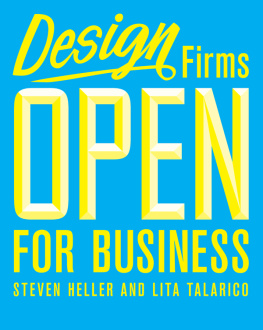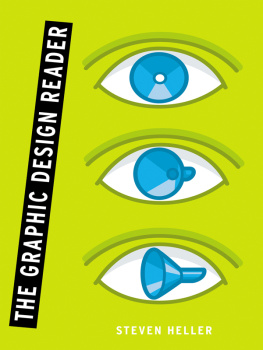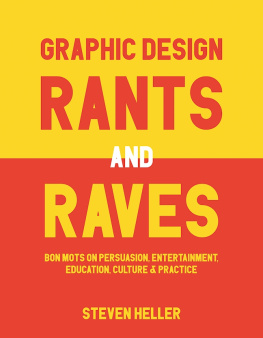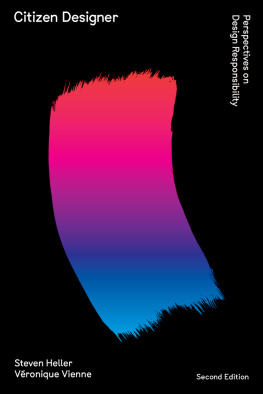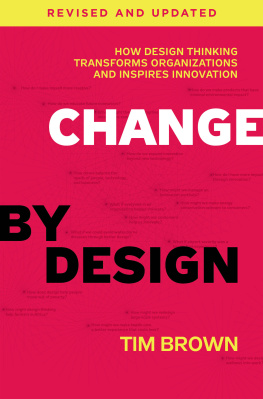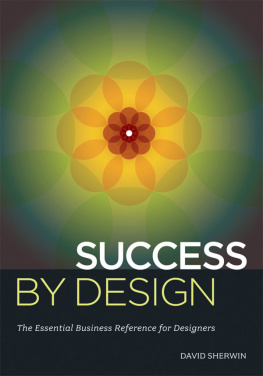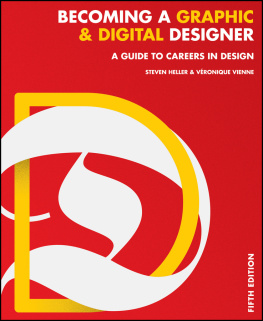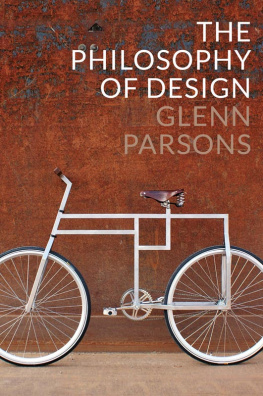FOR LOUISE + NICK S.H.
FOR JULIAN L.T.
Copyright 2013 by Steven Heller and Lita Talarico
All Rights Reserved. Copyright under Berne Copyright Convention, Universal Copyright Convention, and Pan American Copyright Convention. No part of this book may be reproduced, stored in a retrieval system, or transmitted in any form, or by any means, electronic, mechanical, photocopying, recording or otherwise, without the express written consent of the publisher, except in the case of brief excerpts in critical reviews or articles. All inquiries should be addressed to Allworth Press, 307 West 36th Street, 11th Floor, New York, NY 10018.
Allworth Press books may be purchased in bulk at special discounts for sales promotion, corporate gifts, fund-raising, or educational purposes. Special editions can also be created to specifications. For details, contact the Special Sales Department, Allworth Press, 307 West 36th Street, 11th Floor, New York, NY 10018 or .
15 14 13 12 11 5 4 3 2 1
Published by Allworth Press, an imprint of Skyhorse Publishing, Inc. 307 West 36th Street, 11th Floor, New York, NY 10018. Allworth Press is a registered trademark of Skyhorse Publishing, Inc., a Delaware corporation.
www.allworth.com
Cover and interior design by RED / Rogers Eckersley Design
Library of Congress Cataloging-in-Publication Data is available on file.
ISBN: 978-1-58115-930-1
Printed in China
ACKNOWLEDGMENTS
This book (and so many others) would not be possible if not for the continued support and enthusiasm of Tad Crawford, who has led Allworth Press for many fruitful years. We thank him for everything hes done for graphic design and design writing. We are also grateful to Delia Casa, assistant editor at Skyhorse Publishing, for her keen attention to this project.
Of course, the stars of this book are the designers who are featuredand even some of those who are not. To you we are most grateful.
And for their continued support, thanks to David Rhodes, president, and Anthony Rhodes, executive vice president of the School of Visual Arts, New York.
Finally, much appreciation to Esther Ro-Schofield and Ron Callahan at the SVA MFA Design / Designer as Author + Entrepreneur program for their good humor, hard work, and attention to details.
STEVEN HELLER & LITA TALARICO
CONTENTS
OPEN FOR
BUSINESS
OPENING A DESIGN OFFICE IS AN ACT OF PROFESSIONAL MATURITY, LIKE GETTING A FIRST CAR, A FIRST APARTMENT, AND EVEN A FIRST COUCH.
Signing the lease, hanging a sign on the door, selecting the perfect furniture, and placing inspiring art on the walls are coming-of-age rituals that never get tiresome. For some designers the ritual is therefore repeated many times, while others spend many contented years in their long-term rentals. Indeed the expense of renting space often leads to another maturity-affirming actbuying real estate. Property ownership increases the ritualistic intensity and underscores pride-of-place emotions.
A designers workplace is a self-defining environment, a showcase of sense and sensibility, a window to the mind of the professional, and maybe the heart, too. What a designer chooses to display in the space reveals how important the details (as Mies van der Rohe famously noted in his statement about God being in them) really are. Whether or not comfort is a factor is also telltale. A workplace without comfy amenities for guests says one thing, whereas a space with generous reception and meeting areas says another. The office is such a charged environment that some designers establish strict rules to govern behavior. Massimo Vignellis storied dictum that there must be no personal ephemera pinned to an individuals workspace implied two things: That the designers did not command their own workstations (in other words, they were interchangeable); and that personal clutter must not mar the overall design aesthetic. Conversely, certain designers encourage (or are at least laissez-faire) about decorative diversity and workplace clutter, as they are evidence of a vigorous creative environment.
Design spaces, as reflective of creative people in general, are rarely neutral. Rather they are expressions of something importantintimacy or power, or boththat is being communicated to clients, staff, visitors, or simply the messenger. As in handwriting analysis, it is worthwhile to unpack a designers intentions, but in this book we will forego inquiry into the pseudo-psychological underpinnings of office design. Instead we introduce various designers who are Open for Business in spaces that are either modest or lavish, according to their preference. This is not, however, a book about workspaces alone. It is rather a study of the people who inhabit those spaces, and whose creative practices are engaged with the places where they conceive ideas and collaborate with others.
The principals of each studio featured herein answered a common volley of questions. Some are delightfully loquacious; others are self-consciously succinct. Nonetheless, each tells the story of why their studio was formed, why they chose its name, and where it is housed. Questions about design philosophy and aesthetics are balanced with the nitty-gritty of their businesses (staffing, client types, expansion, etc.). Individually, they offer insight into why studios are formed. Collectively, they may provide models for those who are considering the plunge.
We have chosen to represent a broad range of designers in terms of geography, age, and experience, operating small (one to eight), medium (nine to fourteen), and large (fifteen-plus) firms, and even a few without any employees. Independent designers, we found, are increasingly likely to start with small full-time staffs, relying on freelance help when necessary. They are, surprisingly, investing their capital into their studios. Building a sturdy yet scalable infrastructure is, in todays economy, more important than creating a staff, which invariably will ebb and flow as clients come and go. Designers are more comfortable when they are not carrying financial burdens, which obviously means not having to accept commissions that portend difficulty or take on difficult clients simply to pay the salaries of their staffs.
When opening a design firm, understanding that bigger is not better is vital to the firms success, as is accepting fiscal and creative responsibility. It is also an act of professional maturity. The designers who comprise Design Firms Open for Business , regardless of style, manner, and preference, have this in common.
STEVEN HELLER AND LITA TALARICO
SECTION ONE:
SMALL
FIRMS
1-8 EMPLOYEES
ADAMS
MORIOKA
PRINCIPALS
SEAN ADAMS NOREEN MORIOKA
FOUNDED
1990
LOCATION
BEVERLY HILLS, CA
EMPLOYEES
WHAT PROMPTED YOU TO START A STUDIO?
In the early 1990s, the design world was focused on a dystopian, chaotic, degenerated, and oblique approach. We wanted to create work that was clear, simple, optimistic, and accessible. Starting a firm was the only way to achieve this.
HOW DID YOU DETERMINE WHERE YOUR STUDIO WOULD BE LOCATED?
At first, we thought we could work out of my house. This became an episode of Please Dont Eat the Daisies : the phone ringing, dog barking, messengers at the door, and soup boiling over. The architect Barton Myers offered us space in his office in Beverly Hills. He was generous and suggested that we trade services for rent. We moved to a larger space a couple of years later. We are still in Beverly Hills, specifically in the Larry Flynt building. The studio is centrally located between Downtown and the West Side of Los Angeles. It is easy for clients to access. It has remarkable views and great security ( la Larry Flynt). Contrary to popular opinion, there are no naked women, as the Hustler filming happens elsewhere (probably in the Valley).

